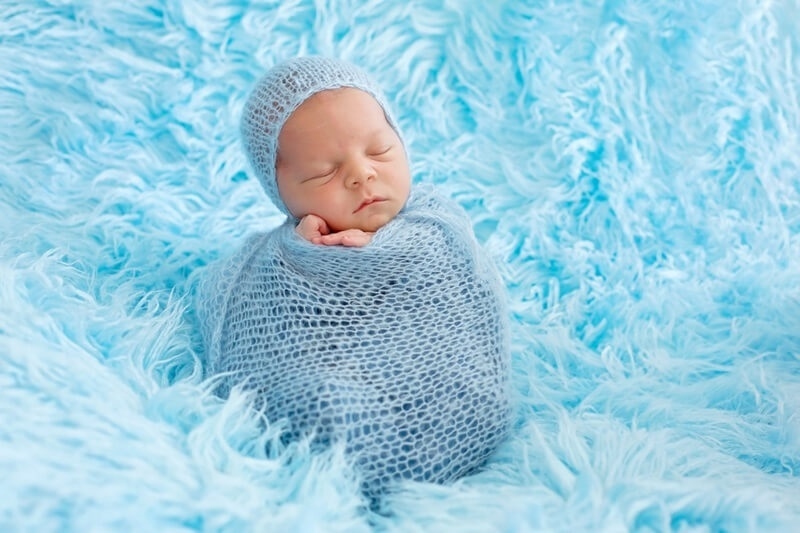
The right sleep sack can mean the difference between a baby who sleeps peacefully through the night and one who wakes up uncomfortable every few hours. And while design matters, the fabric matters even more. The baby sleep sack materials you choose will decide how warm, cool, soft, or breathable it feels, and whether it keeps your little one safe.
In this guide, we’ll break down the safest and most comfortable fabrics, including the organic cotton sleep sack, breathable sleep sack fabric options, and the key differences between muslin versus fleece sleep sack styles. You’ll also see why paying attention to safe baby sleep sack materials matters as much as fit and design.
You might think all baby sleep sacks are basically the same. They’re not. The material determines three important things:
When you get the fabric right, you’re already halfway to a good night’s sleep. When you get it wrong, you end up with a restless baby and a restless you.
More to Discover: Try These Bedroom Makeover Ideas for Better Sleep Tonight!

If you only invest in one type of sleep sack, make it an organic cotton sleep sack. Reputed as the best suitable baby sleeping sack fiber for a good reason, organic cotton is grown without pesticides or harsh dyes, for the assurance of not wrapping their baby in anything that could irritate their skin.
Why it works so well:
For warm weather, go for a single-layer organic cotton jersey. For cooler nights, choose a quilted or lightly padded version. And because it’s durable, an organic cotton sleep sack can handle frequent washing without losing softness.
Some nights call for fabrics that let heat escape rather than hold it in. Breathable sleep-sack material will make all the difference here. Such an array of fabrics offers warmth coupled with ventilation, ensuring that your child is not feeling sweaty.
Some of the best airy fabrics include the following:
In summer, or for warmer homes, or for kids who stay warm naturally, breathable fabrics work like a charm to keep the baby warm enough from freezing, overheating while still providing the snug feeling babies adore.
Explore More: First Apartment Checklist Essentials: Get These Top 7 Now!
One of the most common comparisons parents make is muslin versus fleece sleep sack. Both have their place, but they’re suited to very different conditions.
The smartest approach? Keep both on hand. Use muslin during hot months and switch to fleece once the temperature drops.
The best fabric in the world isn’t enough if the design itself isn’t safe. When choosing safe baby sleep sack materials, check for:
You can also explore other safe options like merino wool and bamboo blends. Both naturally regulate temperature and wick away moisture while staying soft against delicate skin.
| Fabric | Ideal Season | Benefits | Watch Outs |
| Organic Cotton | Year-round | Breathable, hypoallergenic, soft, durable | Needs layering in very cold weather |
| Muslin | Warm months | Ultra-light, airy, breathable | Not warm enough for winter |
| Fleece | Cold months | Plush, insulating, cozy | Too warm for mild/warm weather |
| Bamboo Blend | Transitional seasons | Soft, moisture-wicking, eco-friendly | Can shrink if washed hot |
| Merino Wool | Year-round | Regulates heat, resists odors | Pricier than cotton or fleece |
A common mistake is buying one sleep sack and using it all year. Babies need different materials based on temperature and humidity.
You’ll hear this from seasoned parents: one sleep sack isn’t enough. At minimum, you should have two—ideally in different fabrics. This lets you swap them depending on the season or even the night’s temperature. For example:
It’s a simple setup that keeps your baby comfortable year-round without overthinking it.
Don’t Miss: Discover 10 Easy Ways to Make a Small Apartment Cozy
Choosing the right baby sleep sack materials is part comfort, part safety, and part common sense. An organic cotton sleep sack is the safest all-round choice. For hot weather, muslin is unbeatable. For cold nights, fleece is the warmest. And for year-round flexibility, bamboo or merino wool are worth considering.
The trick is to match the fabric to the temperature, keep an eye on TOG ratings, and always prioritize safe baby sleep sack materials over style or trends. Babies sleep better when they’re not too hot, not too cold, and wrapped in something soft, breathable, and safe. And when your baby sleeps better, you do too.
This content was created by AI